HND in Hospitality Management: Unit 31 Food Safety Task 1
VerifiedAdded on 2023/02/02
|12
|811
|58
Homework Assignment
AI Summary
This assignment solution for Food Safety Management (Unit 31, HND in Hospitality Management) addresses key aspects of food safety. It begins by defining food contamination, differentiating between physical and chemical contamination, and detailing preventive measures. The solution then compares food poisoning and food-borne infections, outlining their causes, symptoms, and differences. The assignment further explores the control of food-borne illnesses, discussing various causes such as bacteria, viruses, and toxins. It emphasizes control measures including handwashing, cross-contamination prevention, proper cooking temperatures, and equipment cleaning. The provided references support the discussed concepts, offering insights into ozone-based food preservation, isochoric freezing, and green food processing techniques.
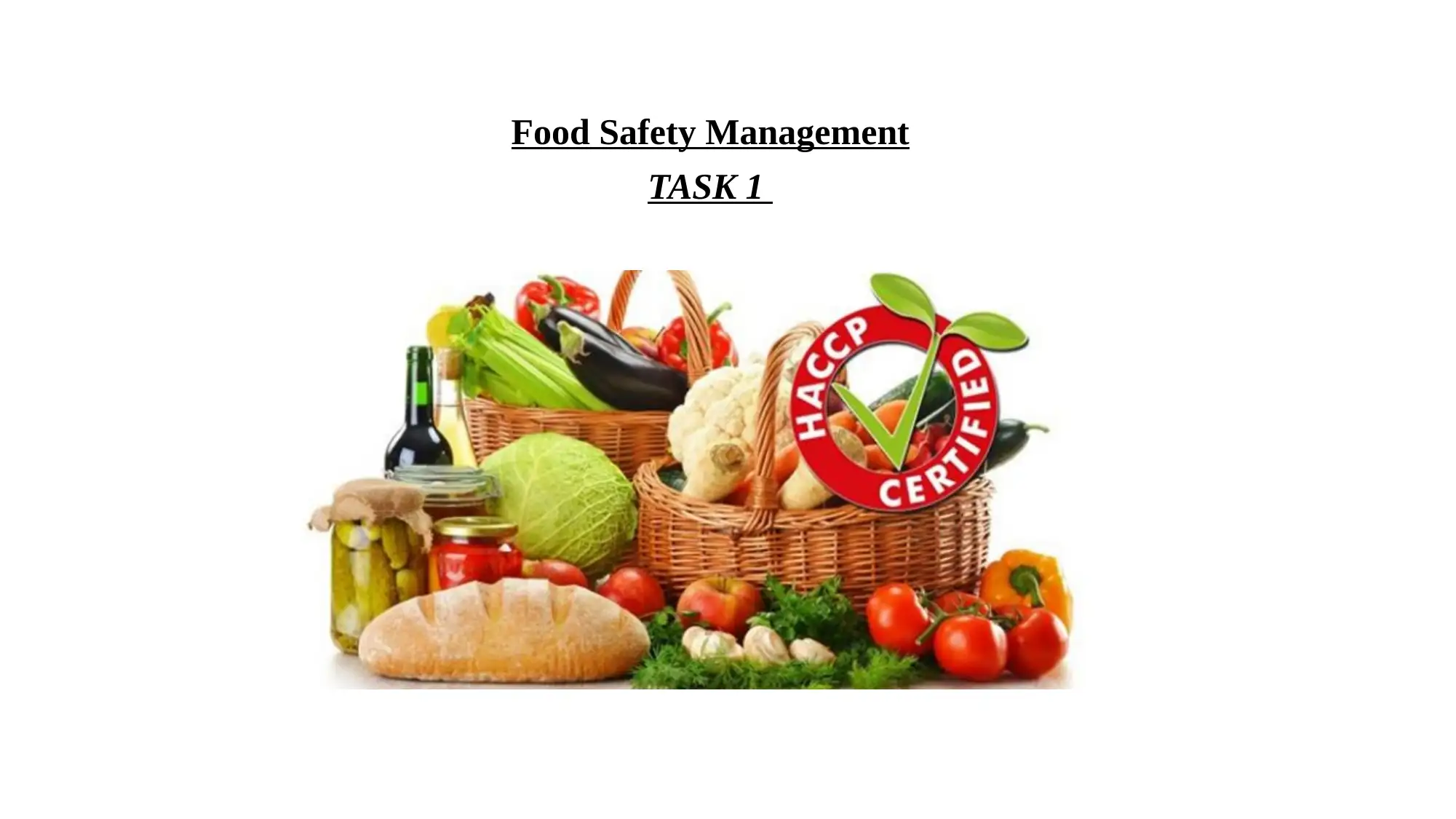
Food Safety Management
TASK 1
TASK 1
Paraphrase This Document
Need a fresh take? Get an instant paraphrase of this document with our AI Paraphraser
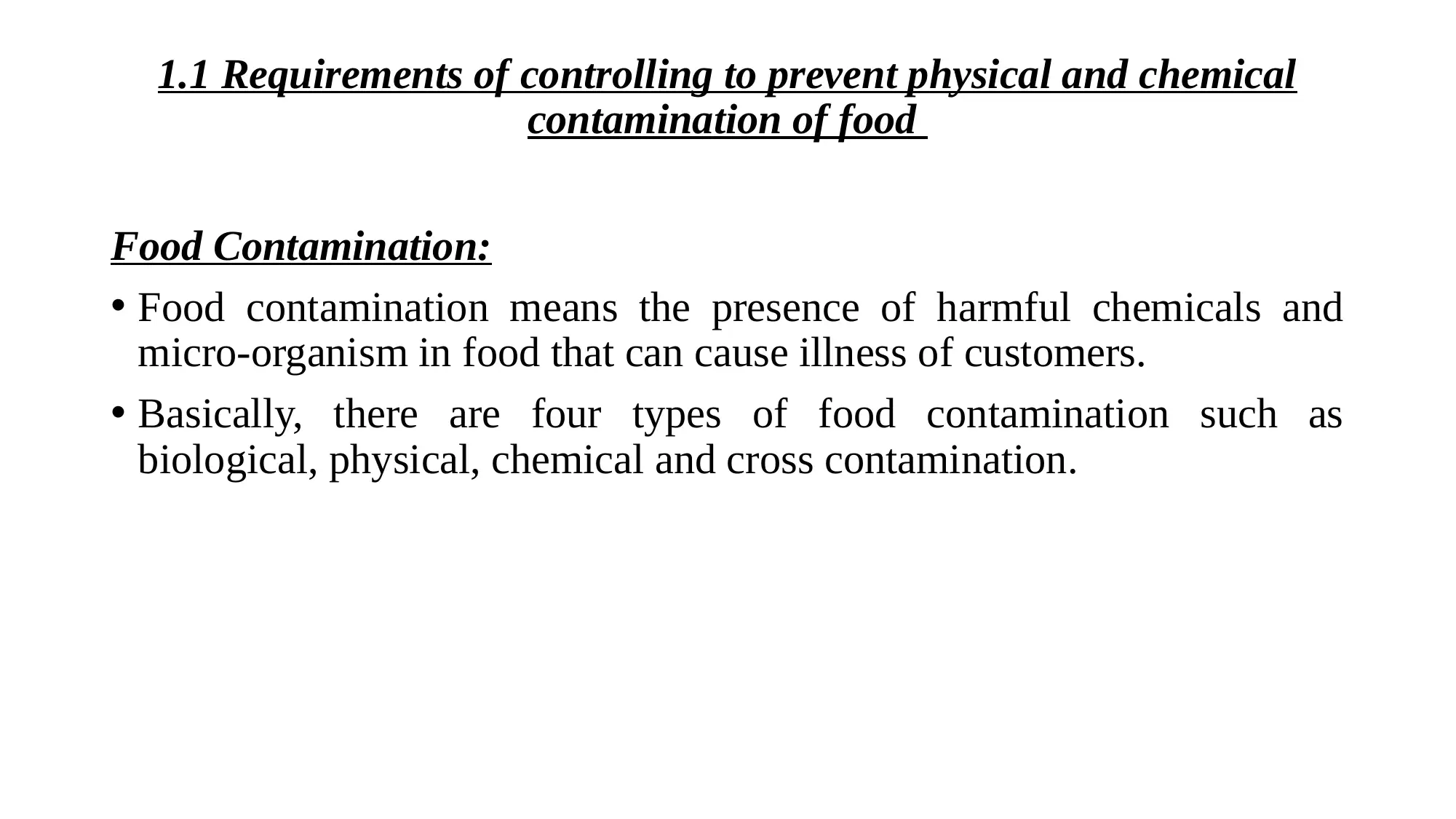
1.1 Requirements of controlling to prevent physical and chemical
contamination of food
Food Contamination:
• Food contamination means the presence of harmful chemicals and
micro-organism in food that can cause illness of customers.
• Basically, there are four types of food contamination such as
biological, physical, chemical and cross contamination.
contamination of food
Food Contamination:
• Food contamination means the presence of harmful chemicals and
micro-organism in food that can cause illness of customers.
• Basically, there are four types of food contamination such as
biological, physical, chemical and cross contamination.
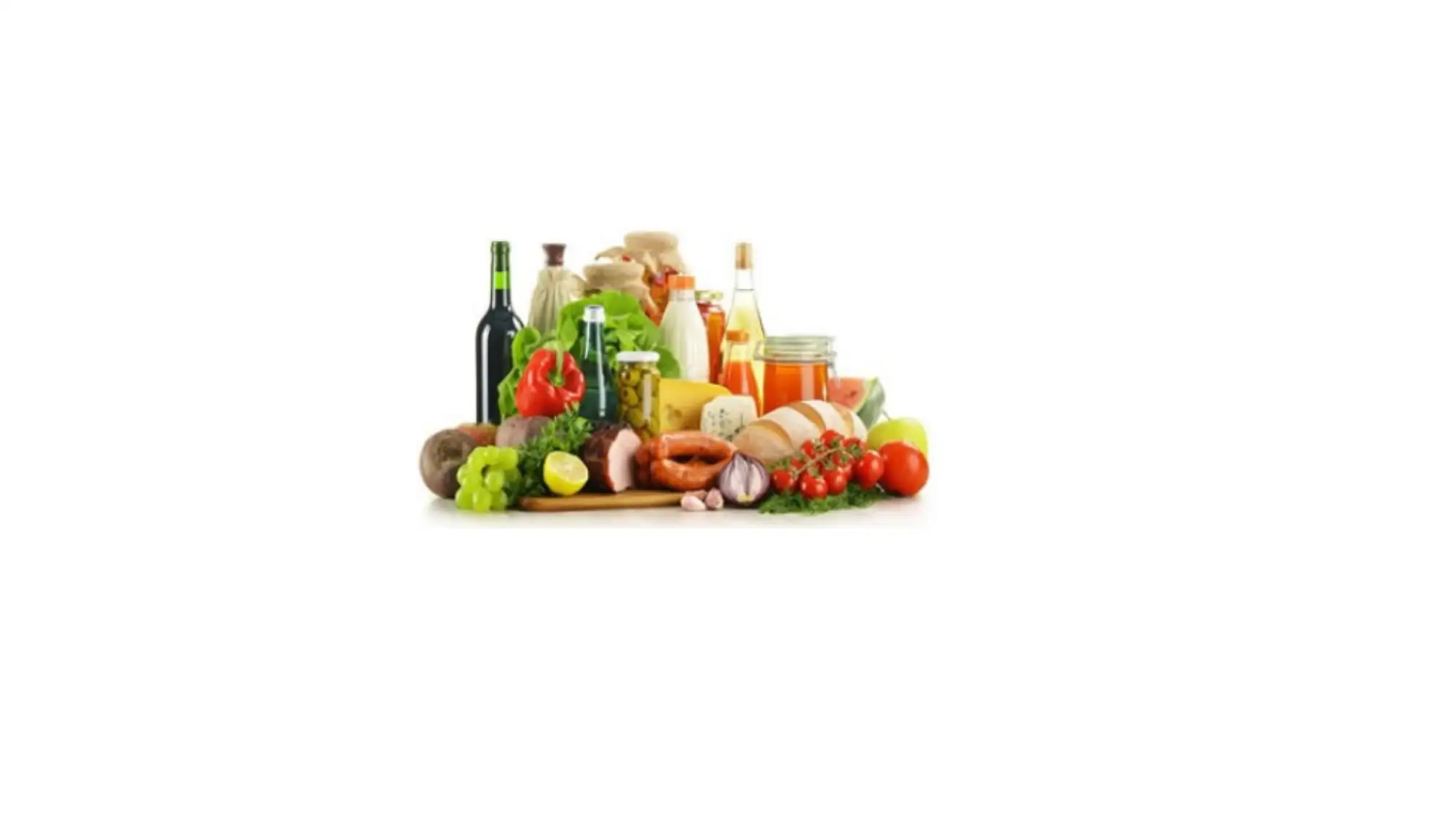
⊘ This is a preview!⊘
Do you want full access?
Subscribe today to unlock all pages.

Trusted by 1+ million students worldwide
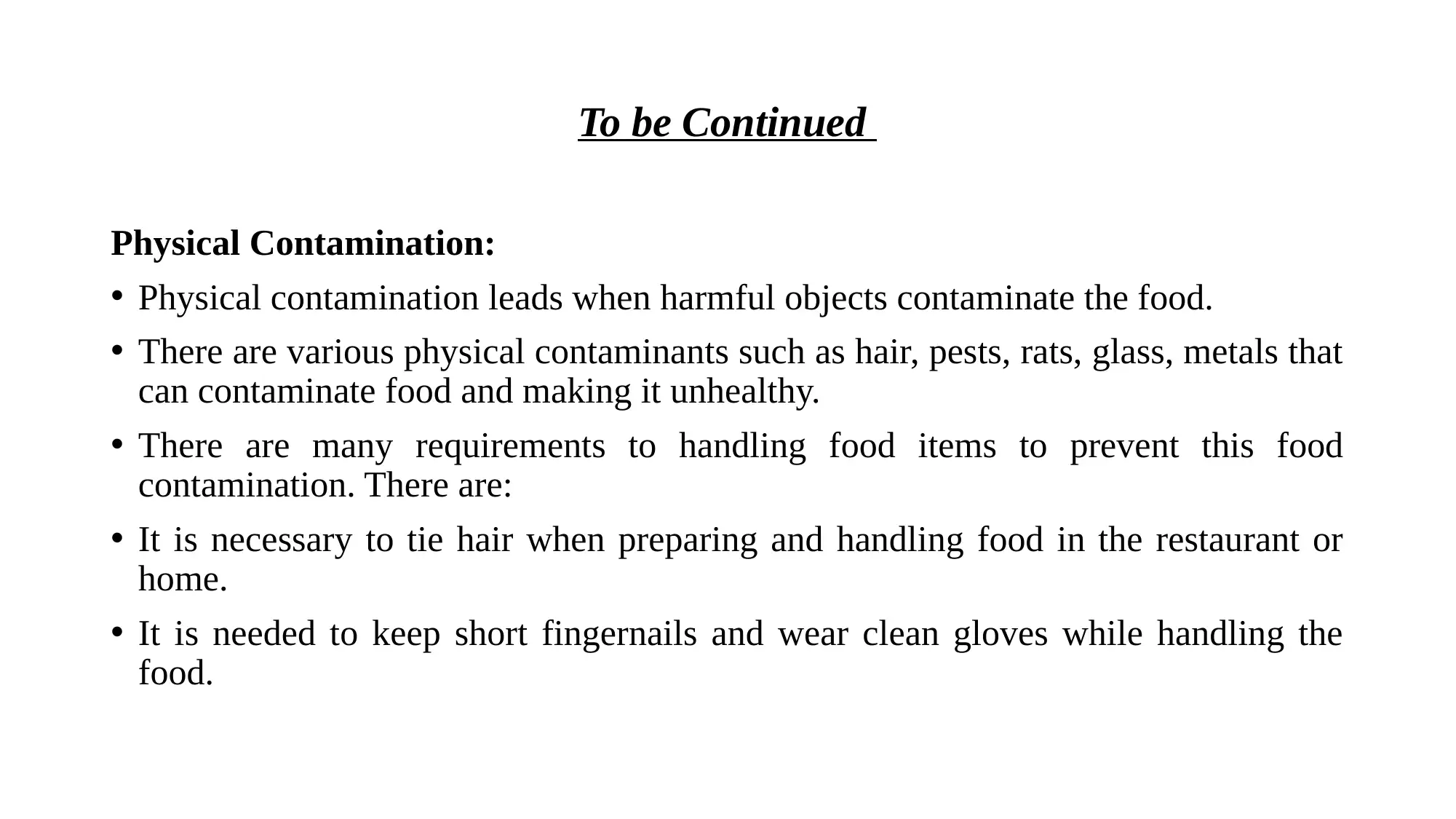
To be Continued
Physical Contamination:
• Physical contamination leads when harmful objects contaminate the food.
• There are various physical contaminants such as hair, pests, rats, glass, metals that
can contaminate food and making it unhealthy.
• There are many requirements to handling food items to prevent this food
contamination. There are:
• It is necessary to tie hair when preparing and handling food in the restaurant or
home.
• It is needed to keep short fingernails and wear clean gloves while handling the
food.
Physical Contamination:
• Physical contamination leads when harmful objects contaminate the food.
• There are various physical contaminants such as hair, pests, rats, glass, metals that
can contaminate food and making it unhealthy.
• There are many requirements to handling food items to prevent this food
contamination. There are:
• It is necessary to tie hair when preparing and handling food in the restaurant or
home.
• It is needed to keep short fingernails and wear clean gloves while handling the
food.
Paraphrase This Document
Need a fresh take? Get an instant paraphrase of this document with our AI Paraphraser
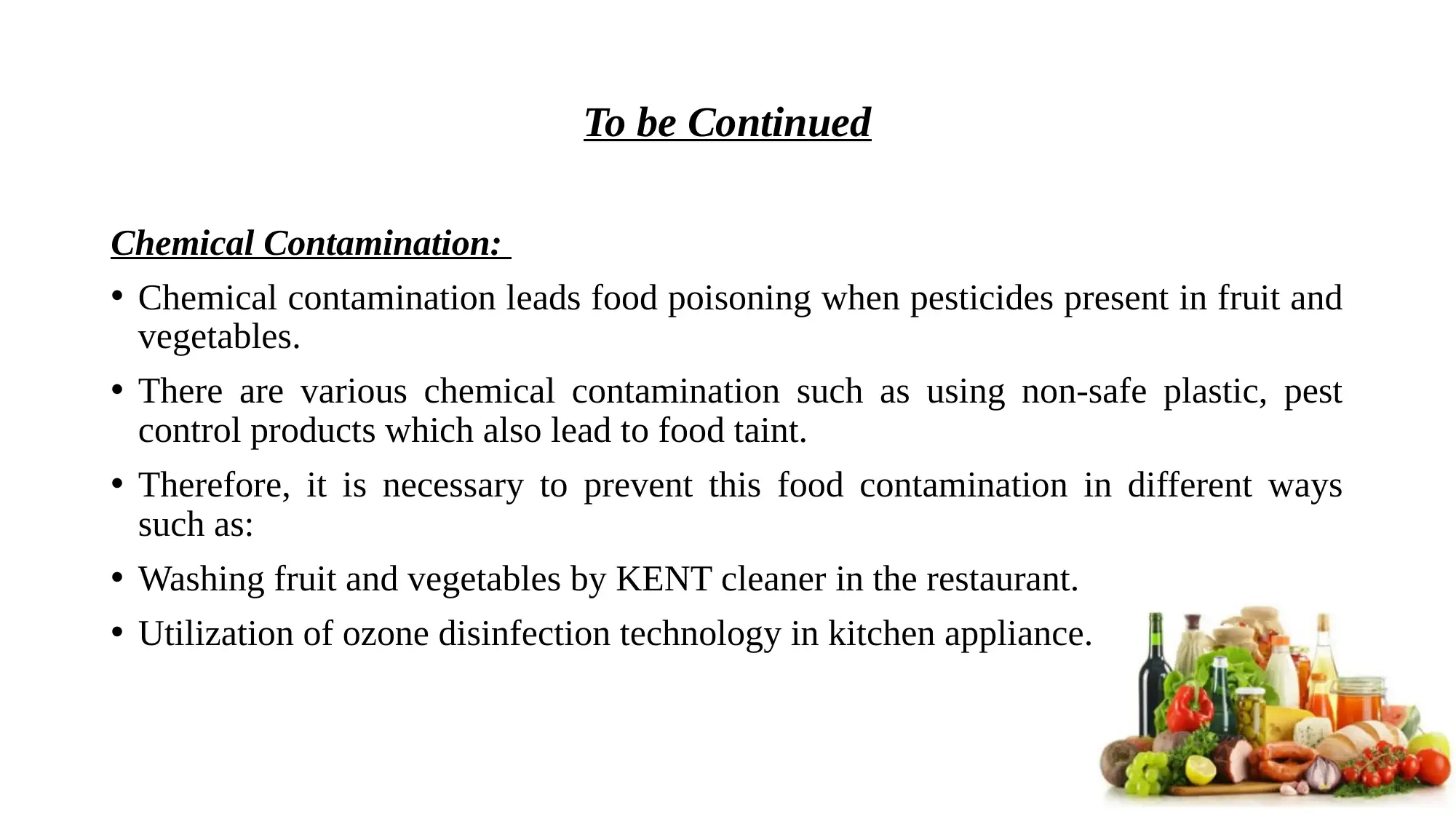
To be Continued
Chemical Contamination:
• Chemical contamination leads food poisoning when pesticides present in fruit and
vegetables.
• There are various chemical contamination such as using non-safe plastic, pest
control products which also lead to food taint.
• Therefore, it is necessary to prevent this food contamination in different ways
such as:
• Washing fruit and vegetables by KENT cleaner in the restaurant.
• Utilization of ozone disinfection technology in kitchen appliance.
Chemical Contamination:
• Chemical contamination leads food poisoning when pesticides present in fruit and
vegetables.
• There are various chemical contamination such as using non-safe plastic, pest
control products which also lead to food taint.
• Therefore, it is necessary to prevent this food contamination in different ways
such as:
• Washing fruit and vegetables by KENT cleaner in the restaurant.
• Utilization of ozone disinfection technology in kitchen appliance.
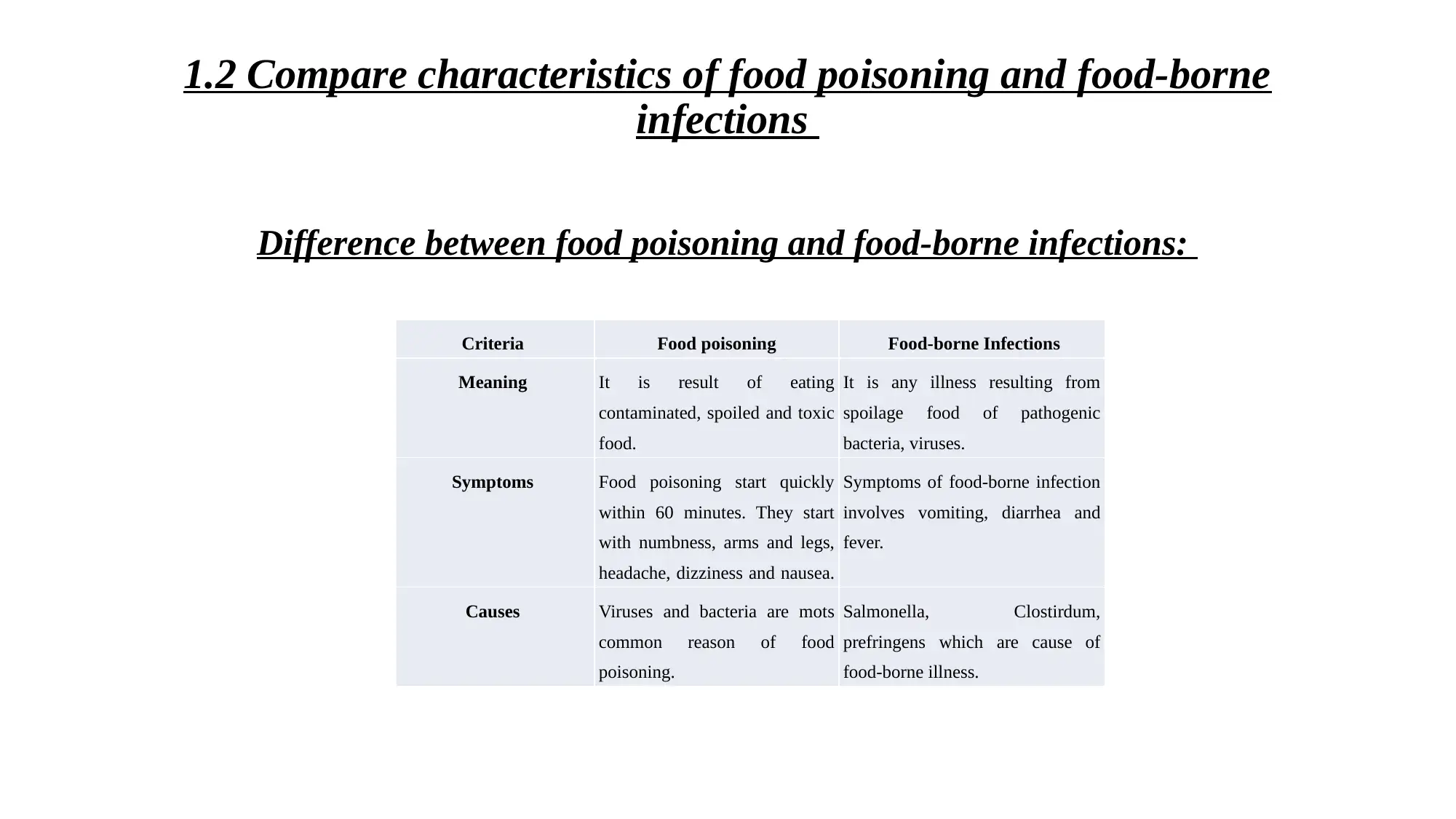
1.2 Compare characteristics of food poisoning and food-borne
infections
Difference between food poisoning and food-borne infections:
Criteria Food poisoning Food-borne Infections
Meaning It is result of eating
contaminated, spoiled and toxic
food.
It is any illness resulting from
spoilage food of pathogenic
bacteria, viruses.
Symptoms Food poisoning start quickly
within 60 minutes. They start
with numbness, arms and legs,
headache, dizziness and nausea.
Symptoms of food-borne infection
involves vomiting, diarrhea and
fever.
Causes Viruses and bacteria are mots
common reason of food
poisoning.
Salmonella, Clostirdum,
prefringens which are cause of
food-borne illness.
infections
Difference between food poisoning and food-borne infections:
Criteria Food poisoning Food-borne Infections
Meaning It is result of eating
contaminated, spoiled and toxic
food.
It is any illness resulting from
spoilage food of pathogenic
bacteria, viruses.
Symptoms Food poisoning start quickly
within 60 minutes. They start
with numbness, arms and legs,
headache, dizziness and nausea.
Symptoms of food-borne infection
involves vomiting, diarrhea and
fever.
Causes Viruses and bacteria are mots
common reason of food
poisoning.
Salmonella, Clostirdum,
prefringens which are cause of
food-borne illness.
⊘ This is a preview!⊘
Do you want full access?
Subscribe today to unlock all pages.

Trusted by 1+ million students worldwide
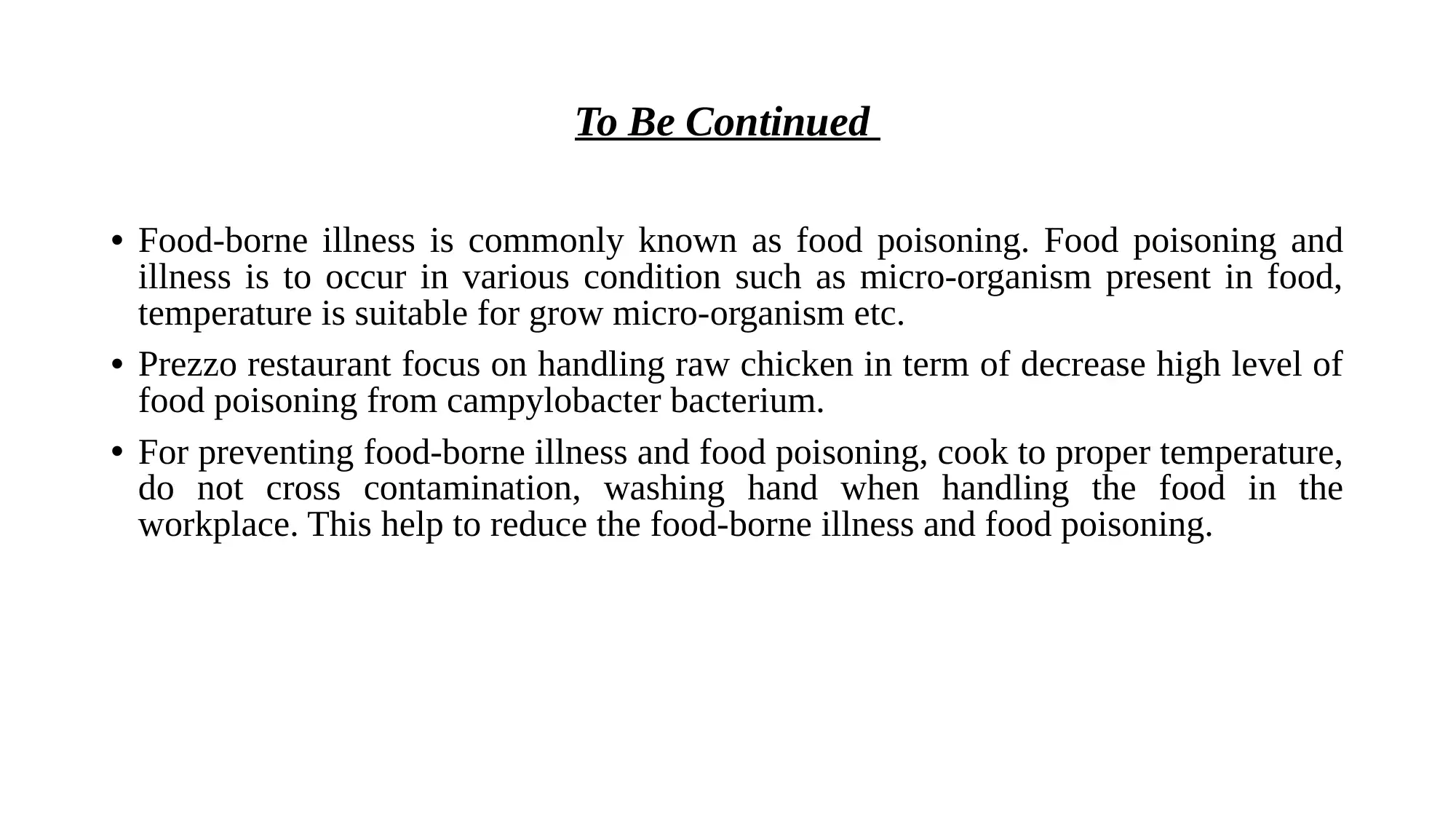
To Be Continued
• Food-borne illness is commonly known as food poisoning. Food poisoning and
illness is to occur in various condition such as micro-organism present in food,
temperature is suitable for grow micro-organism etc.
• Prezzo restaurant focus on handling raw chicken in term of decrease high level of
food poisoning from campylobacter bacterium.
• For preventing food-borne illness and food poisoning, cook to proper temperature,
do not cross contamination, washing hand when handling the food in the
workplace. This help to reduce the food-borne illness and food poisoning.
• Food-borne illness is commonly known as food poisoning. Food poisoning and
illness is to occur in various condition such as micro-organism present in food,
temperature is suitable for grow micro-organism etc.
• Prezzo restaurant focus on handling raw chicken in term of decrease high level of
food poisoning from campylobacter bacterium.
• For preventing food-borne illness and food poisoning, cook to proper temperature,
do not cross contamination, washing hand when handling the food in the
workplace. This help to reduce the food-borne illness and food poisoning.
Paraphrase This Document
Need a fresh take? Get an instant paraphrase of this document with our AI Paraphraser
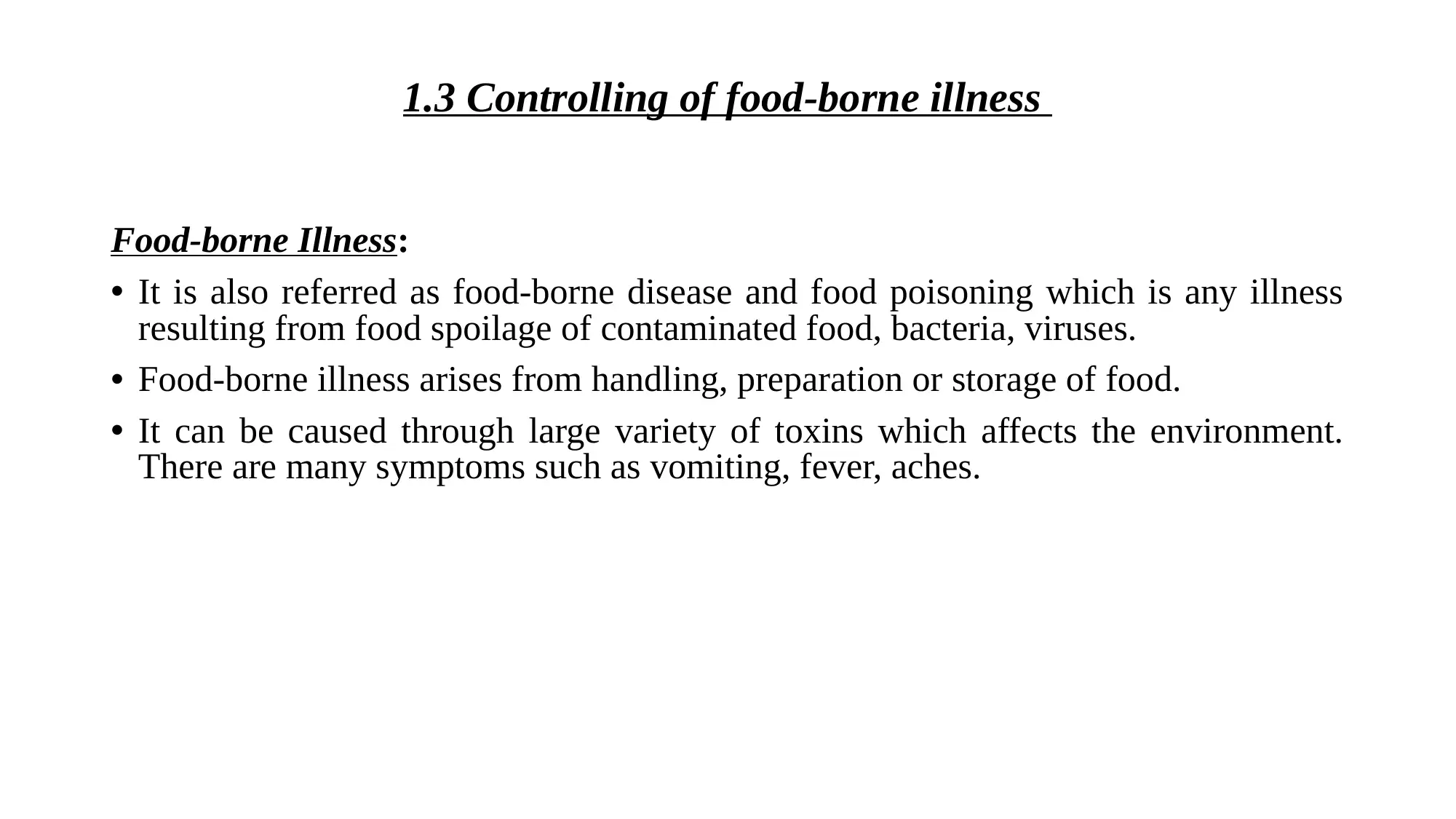
1.3 Controlling of food-borne illness
Food-borne Illness:
• It is also referred as food-borne disease and food poisoning which is any illness
resulting from food spoilage of contaminated food, bacteria, viruses.
• Food-borne illness arises from handling, preparation or storage of food.
• It can be caused through large variety of toxins which affects the environment.
There are many symptoms such as vomiting, fever, aches.
Food-borne Illness:
• It is also referred as food-borne disease and food poisoning which is any illness
resulting from food spoilage of contaminated food, bacteria, viruses.
• Food-borne illness arises from handling, preparation or storage of food.
• It can be caused through large variety of toxins which affects the environment.
There are many symptoms such as vomiting, fever, aches.
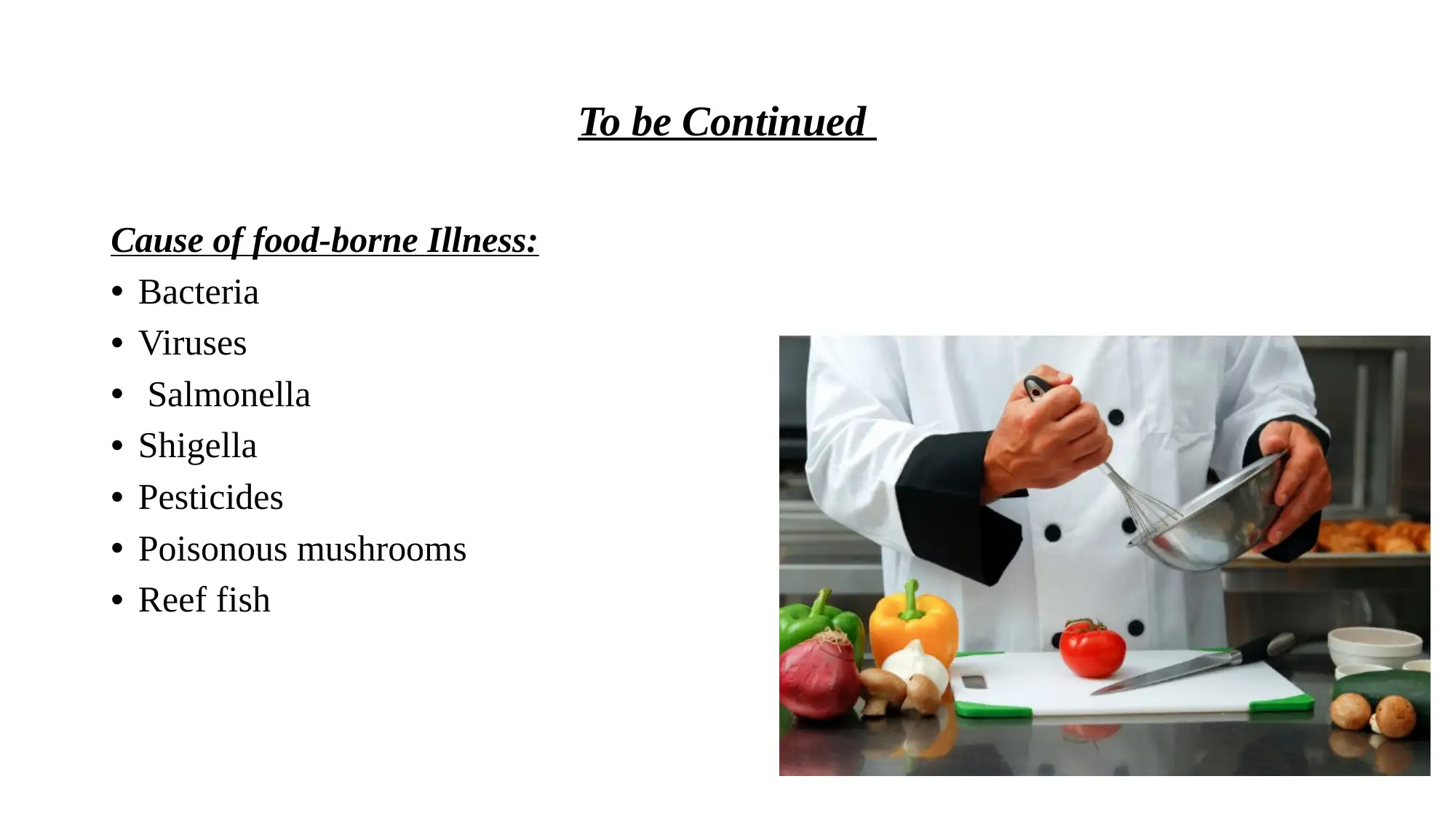
To be Continued
Cause of food-borne Illness:
• Bacteria
• Viruses
• Salmonella
• Shigella
• Pesticides
• Poisonous mushrooms
• Reef fish
Cause of food-borne Illness:
• Bacteria
• Viruses
• Salmonella
• Shigella
• Pesticides
• Poisonous mushrooms
• Reef fish
⊘ This is a preview!⊘
Do you want full access?
Subscribe today to unlock all pages.

Trusted by 1+ million students worldwide
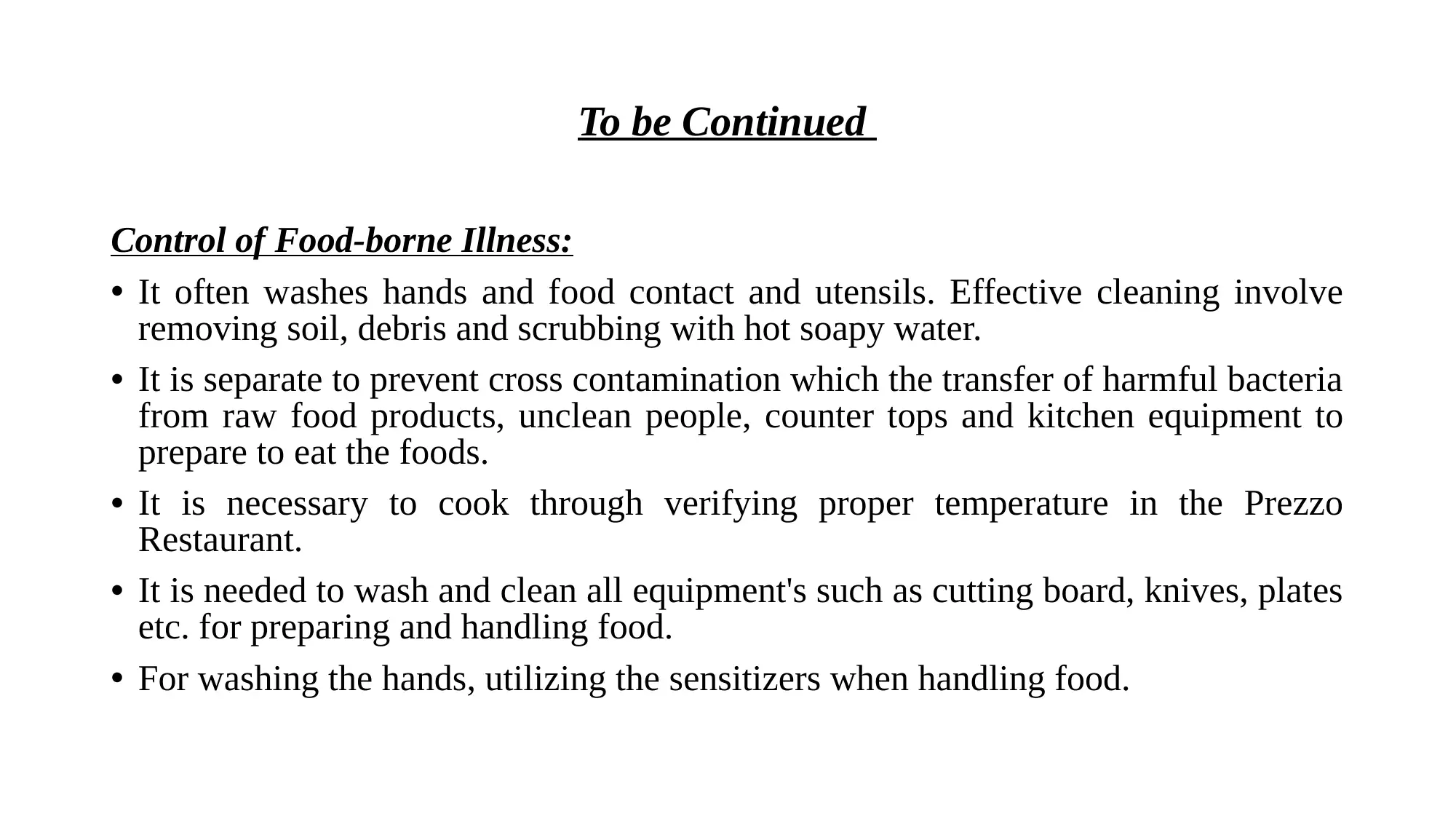
To be Continued
Control of Food-borne Illness:
• It often washes hands and food contact and utensils. Effective cleaning involve
removing soil, debris and scrubbing with hot soapy water.
• It is separate to prevent cross contamination which the transfer of harmful bacteria
from raw food products, unclean people, counter tops and kitchen equipment to
prepare to eat the foods.
• It is necessary to cook through verifying proper temperature in the Prezzo
Restaurant.
• It is needed to wash and clean all equipment's such as cutting board, knives, plates
etc. for preparing and handling food.
• For washing the hands, utilizing the sensitizers when handling food.
Control of Food-borne Illness:
• It often washes hands and food contact and utensils. Effective cleaning involve
removing soil, debris and scrubbing with hot soapy water.
• It is separate to prevent cross contamination which the transfer of harmful bacteria
from raw food products, unclean people, counter tops and kitchen equipment to
prepare to eat the foods.
• It is necessary to cook through verifying proper temperature in the Prezzo
Restaurant.
• It is needed to wash and clean all equipment's such as cutting board, knives, plates
etc. for preparing and handling food.
• For washing the hands, utilizing the sensitizers when handling food.
Paraphrase This Document
Need a fresh take? Get an instant paraphrase of this document with our AI Paraphraser
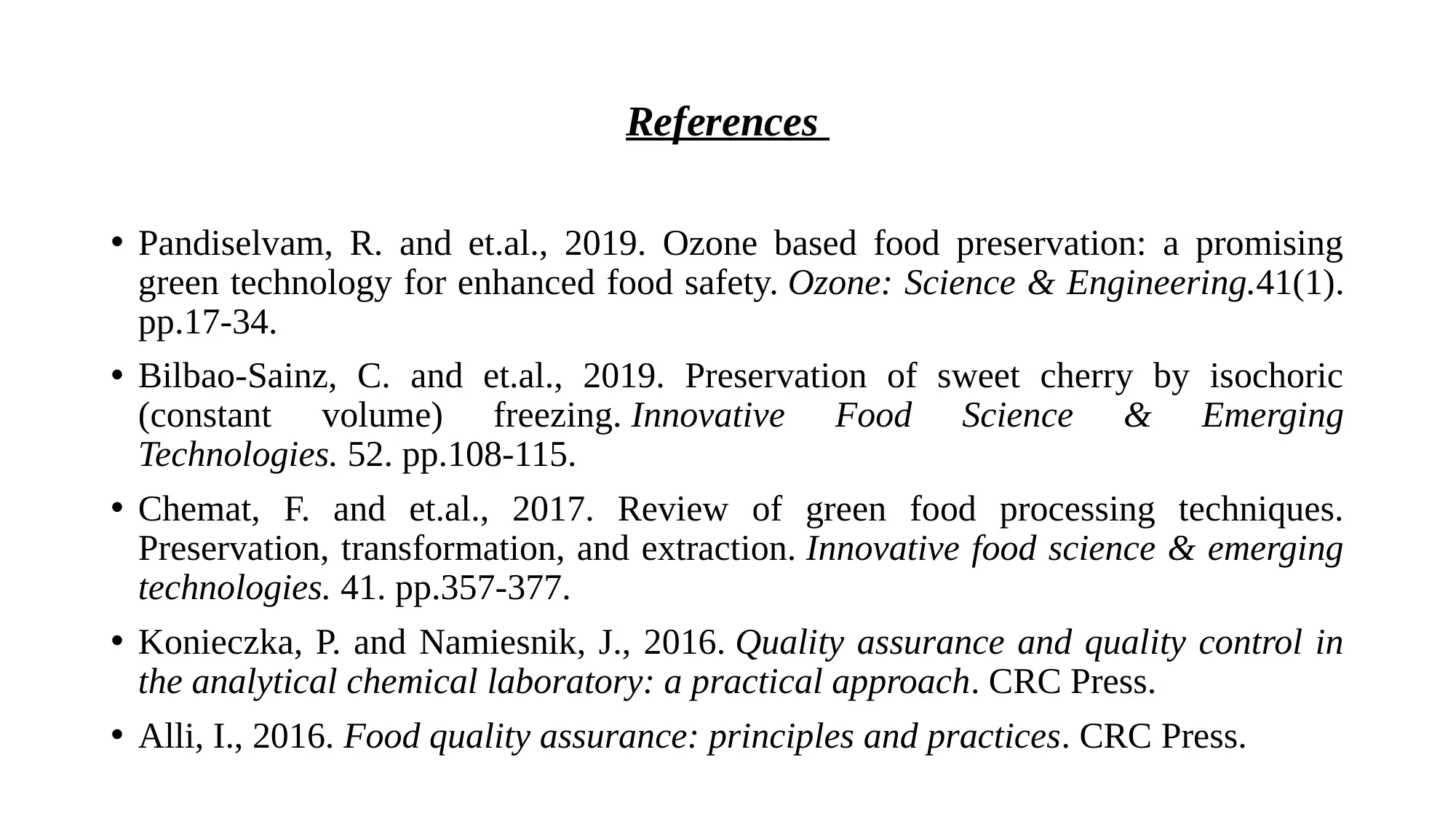
References
• Pandiselvam, R. and et.al., 2019. Ozone based food preservation: a promising
green technology for enhanced food safety. Ozone: Science & Engineering.41(1).
pp.17-34.
• Bilbao-Sainz, C. and et.al., 2019. Preservation of sweet cherry by isochoric
(constant volume) freezing. Innovative Food Science & Emerging
Technologies. 52. pp.108-115.
• Chemat, F. and et.al., 2017. Review of green food processing techniques.
Preservation, transformation, and extraction. Innovative food science & emerging
technologies. 41. pp.357-377.
• Konieczka, P. and Namiesnik, J., 2016. Quality assurance and quality control in
the analytical chemical laboratory: a practical approach. CRC Press.
• Alli, I., 2016. Food quality assurance: principles and practices. CRC Press.
• Pandiselvam, R. and et.al., 2019. Ozone based food preservation: a promising
green technology for enhanced food safety. Ozone: Science & Engineering.41(1).
pp.17-34.
• Bilbao-Sainz, C. and et.al., 2019. Preservation of sweet cherry by isochoric
(constant volume) freezing. Innovative Food Science & Emerging
Technologies. 52. pp.108-115.
• Chemat, F. and et.al., 2017. Review of green food processing techniques.
Preservation, transformation, and extraction. Innovative food science & emerging
technologies. 41. pp.357-377.
• Konieczka, P. and Namiesnik, J., 2016. Quality assurance and quality control in
the analytical chemical laboratory: a practical approach. CRC Press.
• Alli, I., 2016. Food quality assurance: principles and practices. CRC Press.

⊘ This is a preview!⊘
Do you want full access?
Subscribe today to unlock all pages.

Trusted by 1+ million students worldwide
1 out of 12
Related Documents
Your All-in-One AI-Powered Toolkit for Academic Success.
+13062052269
info@desklib.com
Available 24*7 on WhatsApp / Email
![[object Object]](/_next/static/media/star-bottom.7253800d.svg)
Unlock your academic potential
Copyright © 2020–2025 A2Z Services. All Rights Reserved. Developed and managed by ZUCOL.





